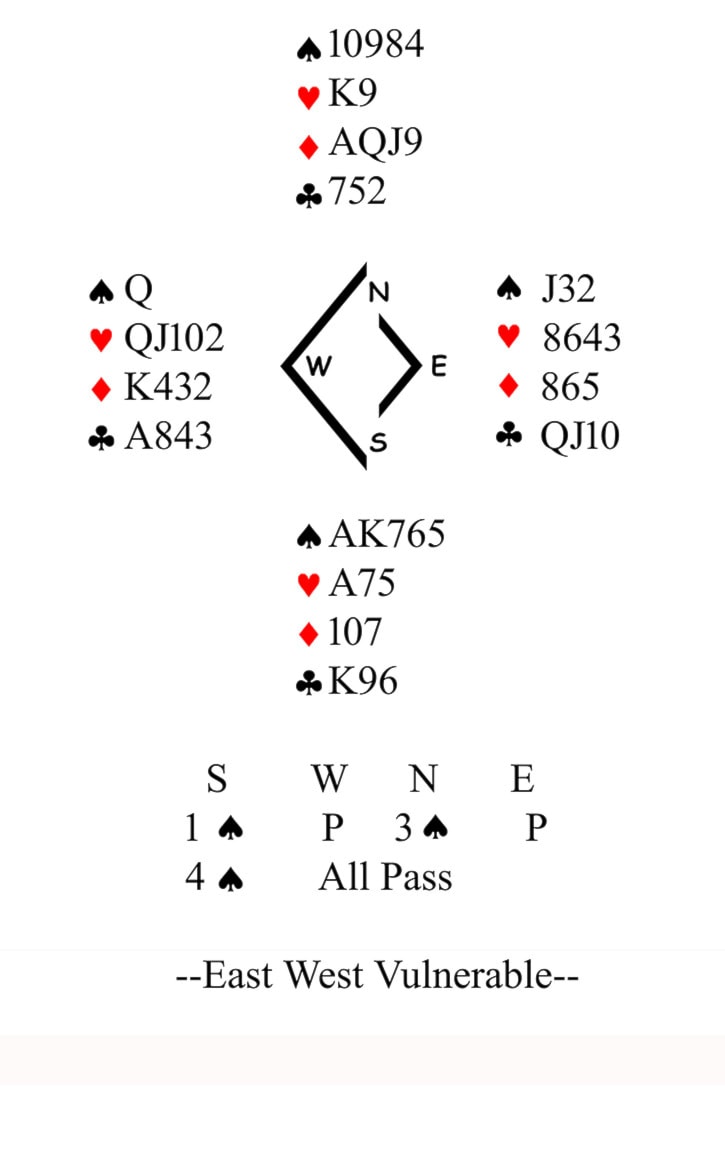In Standard American, one makes a major limit raise with four-card support most of the time, while in Two-Over-One, a major limit raise promises four-card support all of the time.
The logic behind this is that sometimes it is better to explore secondary fits at the two-level before removing that level of bidding, but it is also very important to tell partner one has four-card support.
The bidding: South, with 14 HCP’s, opens One Spade, and North, with 10-12 points and four Spades, jumps to Three Spades. South accepts the invitation with 14 or more and bids Four Spades.
The Play: West leads the Heart Queen, top of a three-card honour sequence.
Declarer wins the Ace and cashes a top Spade. When West drops the Queen, declarer goes to the Heart King and finesses East for the Jack. West could have Queen Jack frozen, but an avoidance play is necessary. East cannot be allowed in and play a Club. Letting East to gain the lead must be avoided until the Diamond finesse is tried. The Spade Ten wins, and declarer draws East’s last trump.
The law of Restricted Choice supports that declarer play. West played the Spade Queen because he was restricted to do so. He did not have the Jack. The law is just another way to say touching honours are usually split.
Declarer then runs the Diamond Ten through, and it holds. He then plays to the Diamond Queen and pitches a Club on the Ace. He leads up to the Club King and loses two Clubs for +450. If East holds the Diamond King, the contract is doomed because it would be hard for East to play anything but a Club.
If declarer loses to East’s Spade Jack, he will be down, losing a Spade and three Clubs. If West has the Spade Queen-Jack frozen, declarer will make +420.
